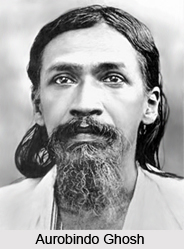 Objectives of Extremist can be termed in a single word can be termed as Swaraj. Tilak gave the slogan to the Extremist group. According to them self-government is essential for the exercise of Swadharma. There could be no social reform, no industrial progress, no useful education and no fulfillment of the national life without self government. Aurobindo Ghosh described "Swaraj as the fulfillment of the ancient life". According to Aurobindo Ghosh "Political freedom is the life breath of a nation". Swaraj was the first basic requirement for a nation and reforms could be no substitute for it.
Objectives of Extremist can be termed in a single word can be termed as Swaraj. Tilak gave the slogan to the Extremist group. According to them self-government is essential for the exercise of Swadharma. There could be no social reform, no industrial progress, no useful education and no fulfillment of the national life without self government. Aurobindo Ghosh described "Swaraj as the fulfillment of the ancient life". According to Aurobindo Ghosh "Political freedom is the life breath of a nation". Swaraj was the first basic requirement for a nation and reforms could be no substitute for it.
Extremists demand for Swaraj was demanding for complete freedom from foreign control. The national affairs should be managed without any foreign intervention. The Extremists had no faith in the generosity of the British parliament. They confirmed their faith in passive resistance, mass agitation and strong will to suffer or make self sacrifices. They aimed to give public self-reliance and confidence in their own strength.
The nationalist woke the people to a sense of their own strength and appreciate their culture instead of degrading it. Their aim was to get a larger share for Indians as far as administration is concerned as well as to end Britain`s economic exploitation of India. In order to achieve these objectives they had to resort to pressure tactics and a sort of direct action.
This article is a stub. You can enrich by adding more information to it. Send your Write Up to content@indianetzone.com.






